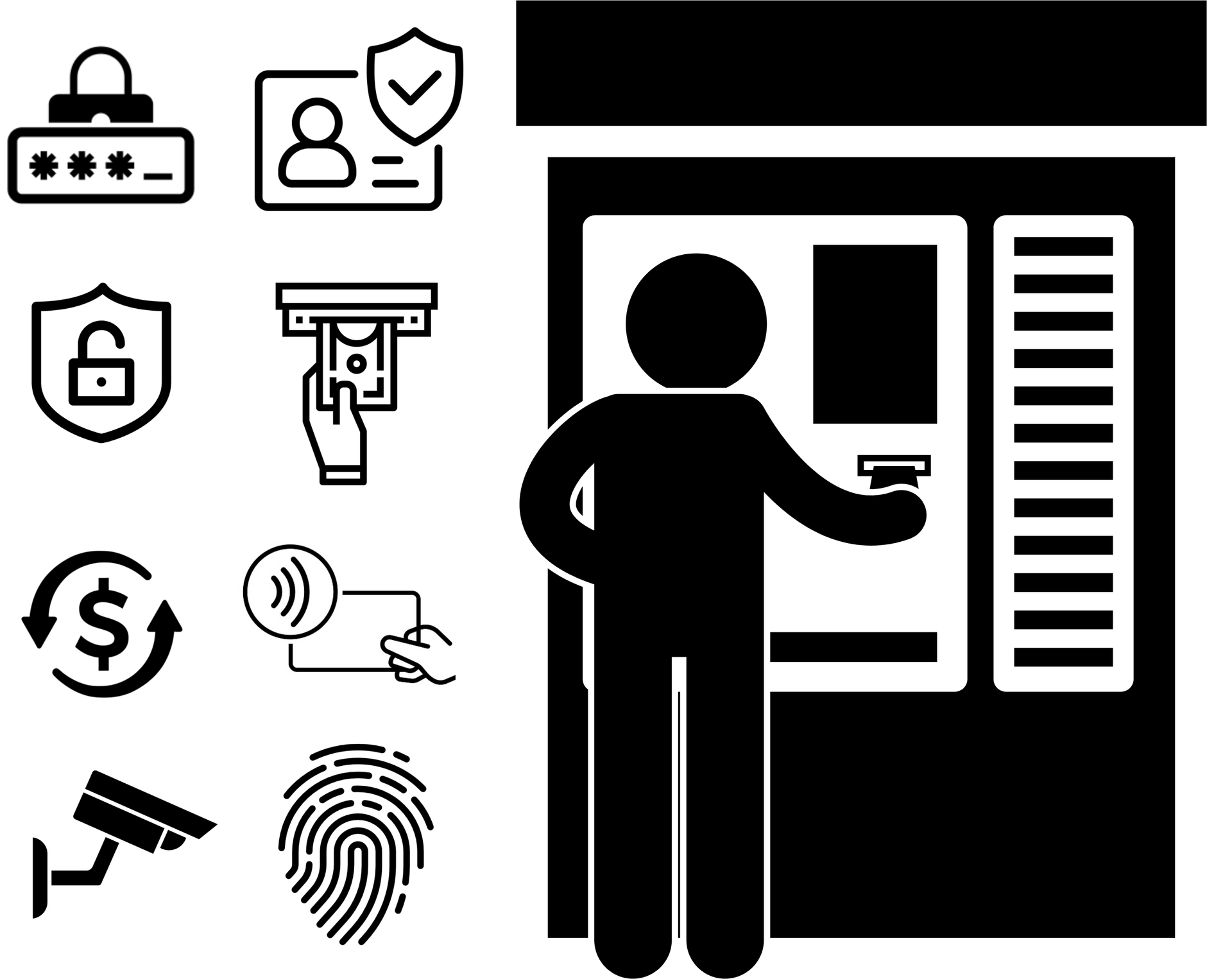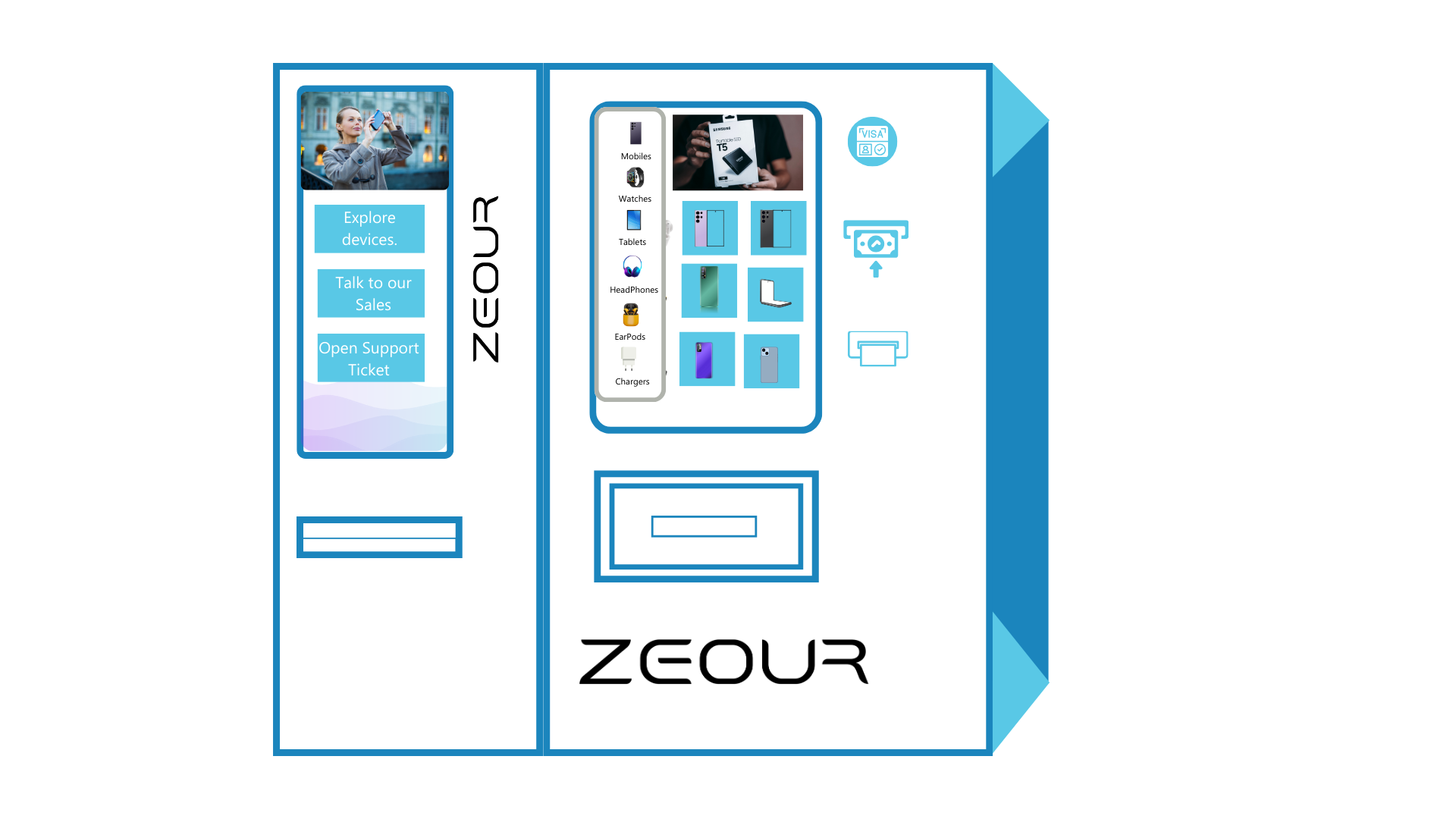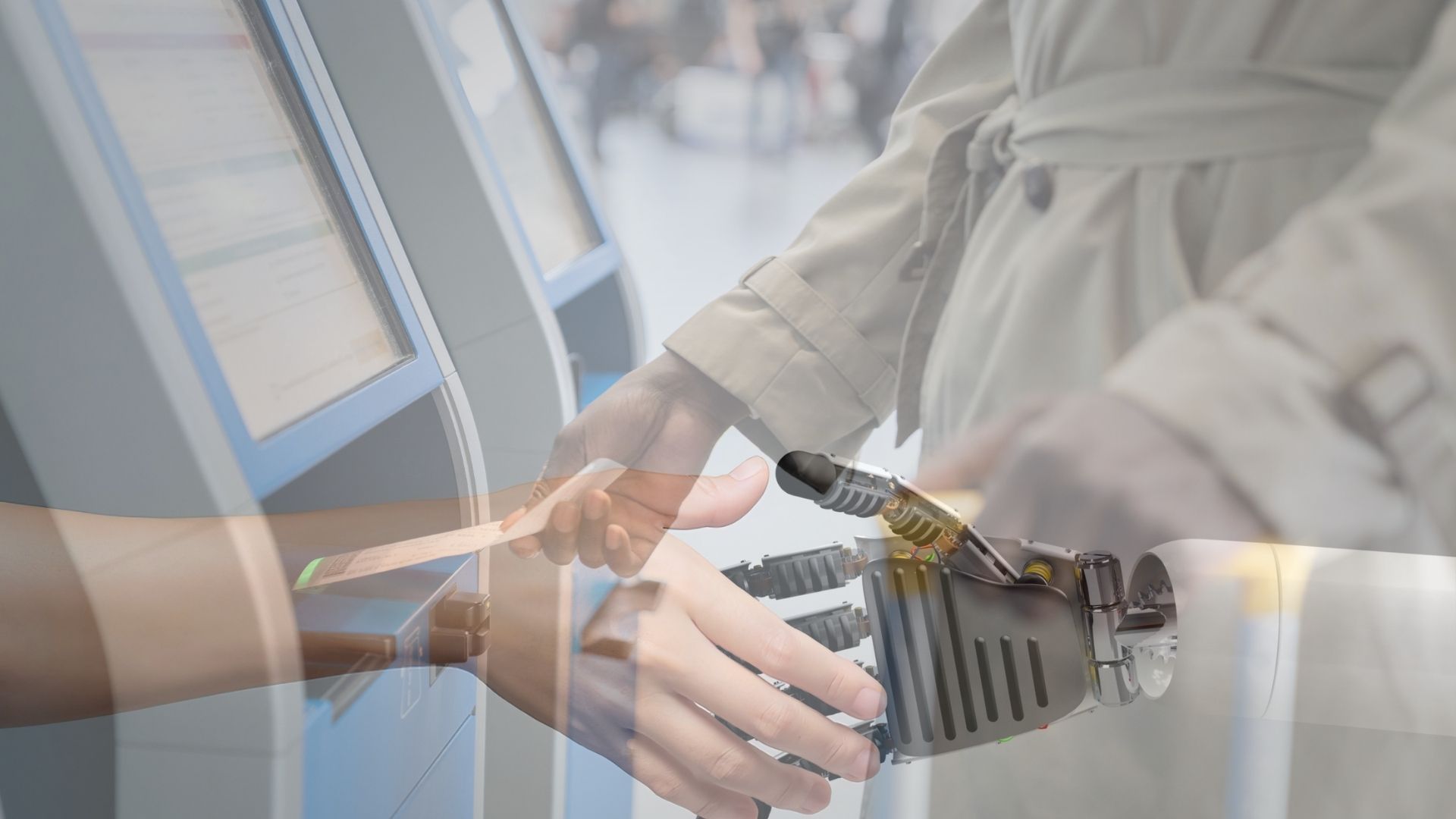Self-service Kiosk
Self-service kiosks are now essential in modern businesses, allowing customers to perform tasks independently through user-friendly interfaces without employee assistance.
They enhance customer experience across sectors like retail, hospitality, healthcare, telecommunication, banking, goverment and transportation by streamlining operations, reducing wait times, and boosting satisfaction. Automating tasks such as check-ins, ticketing, and payments increases efficiency, cuts costs, and frees up staff for more critical interactions.
As technology evolves, kiosks are becoming more advanced with features like touchscreens and payment systems, providing valuable data insights for service optimization.
This guide will cover Self-service Kiosks' benefits, applications, components, future trends, and tips for selecting and implementing the right kiosk for your business.
Index
List of Services
-
01List Item 1
What is a Self-Service Kiosk?
-
02List Item 2
The Advantages of Implementing a Self-Service Kiosk
-
03List Item 3
Which Industries Benefit from Self-Service Kiosks?
-
04List Item 4
Does a Self-Service Kiosk Replace Service Employees?
-
05
How Does a Self-Service Kiosk Work?
-
06
How to Choose the Best Self-Service Kiosk?
-
07
What are Other Components of a Self-Service Kiosk?
-
08
What Requirements are There for Accessibility in Self-Service Kiosks?
-
09
How to Implement a Self-Service Kiosk?
-
10
Future Trends in Self-Service Kiosks
-
11
Download the Complete Guide to Self-Service Kiosks
Index 01
What is a Self-Service Kiosk?
A self-service kiosk is an interactive terminal that empowers users to complete a variety of tasks independently, without the need for assistance from a service employee.
These self-service kiosks are equipped with intuitive, user-friendly interfaces that cater to a broad range of needs and are thoughtfully designed to streamline various transactions.
Users can engage in activities such as purchasing tickets for events, checking in for flights at the airport, placing orders at restaurants, and accessing other essential services, all at their convenience.
The increasing prevalence of these
self-service kiosks reflects a growing trend towards automation and self-service options across multiple industries, enhancing efficiency and improving the overall customer experience.

Index 02
The Advantages of Implementing a Self-Service Kiosk
Implementing self-service kiosks offers several significant benefits that can greatly enhance the overall customer experience and operational efficiency:
Enhanced Efficiency
Self-service kiosks streamline operations by handling multiple transactions simultaneously. This reduces wait times and increases the speed of service, allowing businesses to serve more customers in less time. For example, in a fast-food restaurant, kiosks can take orders while employees focus on food preparation and delivery.
Cost Savings
By automating routine tasks, self-service kiosks can significantly reduce labor costs. Businesses can allocate human resources to more complex and value-added tasks, such as customer support and personalized services. This can lead to overall cost savings and improved operational efficiency.
Improved Accuracy
Self-service kiosks minimize the risk of human error in transactions. Customers input their own information and orders, reducing the chances of miscommunication and mistakes. This leads to more accurate processing of orders, payments, and other transactions.
Increased Customer Satisfaction
Customers appreciate the convenience and speed of self-service kiosks. They have more control over their transactions and can complete tasks at their own pace. This enhances the overall customer experience, leading to higher satisfaction and loyalty.
24/7 Availability
Self-service kiosks can operate around the clock, providing services even during off-hours. This is particularly beneficial for businesses that need to offer continuous service, such as airports, hotels, and healthcare facilities. Customers can access services at any time, enhancing convenience and satisfaction.
Data Collection and Insights
Self-service kiosks collect valuable data on customer behavior, preferences, and transaction patterns. Businesses can analyze this data to gain insights into customer needs and trends. This information can be used to improve services, tailor marketing strategies, and make data-driven decisions.
Space Optimization
Self-service kiosks require less physical space compared to traditional service counters. Businesses can optimize their floor space and improve the layout of their premises. This is especially useful in retail environments where maximizing display space is crucial.
Brand Image and Innovation
Implementing self-service kiosks showcases a business's commitment to innovation and technology. It enhances the brand image and positions the company as forward-thinking and customer-centric. This can attract tech-savvy customers and set the business apart from competitors.
Personalization
Advanced self-service kiosks can offer personalized experiences based on customer data. For example, a kiosk in a retail store can recommend products based on previous purchases or preferences. This level of personalization enhances customer engagement and satisfaction.
Flexibility and Scalability
Self-service kiosks can be easily updated with new software and features to meet changing business needs. They offer flexibility in terms of functionality and can be scaled up or down based on demand. This adaptability makes them a valuable long-term investment for businesses.

Index 03
Which Industries Benefit from Self-Service Kiosks?
Self-service kiosks have a wide range of applications and can benefit numerous industries. Some of the key industries that benefit from implementing self-service kiosks:
Retail
Retailers use self-service kiosks to enhance the shopping experience and streamline operations. Kiosks can be used for self-checkout, product information, price checks, and loyalty program management. They help reduce queues, improve accuracy in transactions, and provide customers with a quick and convenient shopping experience.
Healthcare
In the healthcare industry, self-service kiosks are used for patient check-ins, appointment scheduling, and information dissemination. They help reduce wait times, improve data accuracy, and ensure a smoother patient experience. Kiosks can also be used for billing and payments, freeing up healthcare staff to focus on patient care.
Hospitality
Hotels and resorts use self-service kiosks for guest check-ins and check-outs, room key issuance, and concierge services. These kiosks enhance the guest experience by providing a quick and efficient way to handle routine tasks, allowing hotel staff to focus on personalized guest interactions.
Food and Beverage
Self-service kiosks in the food and beverage industry, particularly in quick-service restaurants, streamline the ordering process. Customers can place their orders, customize their meals, and make payments through the kiosk. This reduces order inaccuracies, speeds up the service, and improves overall customer satisfaction.
Transportation
Airports, train stations, and bus terminals use self-service kiosks for ticketing, check-ins, and real-time travel information. These kiosks reduce queues, provide up-to-date travel information, and enhance the overall travel experience. In airports, for example, passengers can use kiosks to check in for flights, print boarding passes, and tag their luggage.
Banking and Financial Services
Banks and financial institutions use self-service kiosks to offer services such as account inquiries, cash withdrawals, deposits, and bill payments. These kiosks provide customers with convenient access to banking services outside of traditional business hours and reduce the need for in-person visits to bank branches.
Government Services
Government agencies use self-service kiosks to provide citizens with access to various services, such as renewing driver's licenses, paying fines, and submitting applications. These kiosks improve the efficiency of public services, reduce wait times, and provide a convenient way for citizens to complete tasks.
Education
Educational institutions use self-service kiosks for student registrations, library checkouts, and information dissemination. Kiosks can help manage campus resources, provide important announcements, and facilitate administrative tasks, improving the overall efficiency of educational services.
Entertainment and Recreation
Amusement parks, cinemas, and museums use self-service kiosks for ticket purchases, membership renewals, and information services. These kiosks enhance the visitor experience by reducing wait times and providing easy access to information and services.
Real Estate
Real estate firms use
self-service kiosks to showcase property listings, provide virtual tours, and collect visitor information. These kiosks enhance the property viewing experience and provide potential buyers with detailed information about available properties

Index 04
Does a Self-Service Kiosk Replace Service Employees?
Self-service kiosks do not necessarily replace service employees. Instead, they complement and enhance the workforce by automating routine tasks, improving operational efficiency, and allowing employees to focus on higher-value activities. The successful integration of kiosks into a business requires careful planning and a strategic approach to workforce management, ensuring that technology and human skills work together harmoniously.
Complementary Role
While self-service kiosks automate many routine tasks, they don't necessarily replace service employees. Instead, they complement the workforce by handling repetitive and mundane activities, allowing staff to focus on more complex and customer-centric interactions.
For example:
- In a restaurant, kiosks can take orders and process payments, freeing up employees to focus on food preparation, customer service, and maintaining the dining area.
- In retail, kiosks can handle self-checkout processes, enabling staff to assist customers with inquiries, manage inventory, and provide personalized service.
Enhanced Customer Experience
Self-service kiosks can enhance the overall customer experience by reducing wait times and increasing service efficiency. This leads to higher customer satisfaction and allows employees to engage in more meaningful interactions with customers. Employees can provide a personalized touch that machines cannot replicate, such as offering tailored recommendations, addressing specific concerns, and creating a welcoming environment.
Operational Efficiency
By automating routine tasks, self-service kiosks help businesses optimize their operations. This can lead to cost savings, which can be reinvested in employee training and development. As a result, employees can acquire new skills and take on higher-value roles within the organization.
Addressing Labor Shortages
In industries facing labor shortages, self-service kiosks can be particularly beneficial. They help fill gaps in staffing and ensure that essential services continue to be delivered efficiently. This is especially relevant in sectors such as hospitality and healthcare, where demand for services can fluctuate significantly.
Redefining Job Roles
The implementation of self-service kiosks often leads to a redefinition of job roles rather than outright replacement. Employees may take on new responsibilities, such as maintaining and managing kiosks, analyzing data collected by kiosks, and ensuring a seamless integration of technology with customer service. This shift can lead to a more dynamic and engaging work environment for staff.
Industry-Specific Considerations
The impact of self-service kiosks on employment varies across industries. In some sectors, kiosks may significantly reduce the need for certain roles, while in others, they may create new opportunities for employees to add value.
For example:
- Retail: Kiosks reduce the need for cashiers but create opportunities for employees to focus on customer assistance and inventory management.
- Healthcare: Kiosks streamline patient check-ins, allowing healthcare staff to concentrate on patient care and administrative tasks.
- Hospitality: Kiosks handle check-ins and check-outs, enabling hotel staff to provide personalized guest services and address specific needs.
Human Touch and Empathy
Despite the efficiency of self-service kiosks, the human touch remains irreplaceable in certain interactions. Situations that require empathy, complex problem-solving, and personalized attention benefit greatly from human involvement. Employees play a crucial role in creating a positive and memorable customer experience, which machines alone cannot achieve.

Index 05
How Does a Self-Service Kiosk Work?
Self-service kiosks are designed to provide users with a seamless and efficient way to perform tasks independently. Here's a detailed look at how they function:
Hardware Components
Touchscreen Interface
The primary mode of interaction for users. The touchscreen interface allows users to navigate through the kiosk's menu and select options by touching the screen. It is designed to be intuitive and user-friendly, accommodating users of all ages and tech-savviness.
Input Devices
- Keyboard and Keypad: Certain kiosks feature physical keyboards or keypads for inputting text and numbers.
- Stylus: A stylus may be available for accurate touch inputs, particularly beneficial for capturing signatures or making detailed selections.
- Fingerprint Readers, Passport Scanners, and ID Card Readers: Integrated into the KYC processing flow.
Output Devices
- Printers: For printing receipts, tickets, boarding passes, or other documents required by the user. The printer is typically thermal, providing fast and reliable printing.
- Display Screens: High-resolution screens display information clearly, guiding users through their interactions.
Payment Systems
- POS Card Readers: For processing credit and debit card transactions. These can be swipe, chip, or contactless readers.
- Cash Acceptors and Dispensers: Some kiosks are equipped to handle cash transactions, accepting bills and coins and dispensing change.
- Mobile Payment Options: QR code scanners and NFC readers enable mobile payments via smartphones and other devices.
Connectivity
- Network Connections: Kiosks are connected to a central system or the internet via Wi-Fi, Ethernet, or cellular connections. This connectivity allows real-time updates and communication with backend systems.
- USB Ports and Peripheral Connections: Additional ports may be provided for connecting external devices or peripherals.
Additional Features
- Cameras: For facial recognition, identity verification, or security monitoring.
- Barcode Scanners: For scanning tickets, loyalty cards, or product barcodes.
- Speakers and Microphones: For providing audio instructions and facilitating voice interactions.
Software Components
User Interface (UI)
The software interface is designed to be intuitive, guiding users through each step of their task. The UI includes buttons, menus, and interactive elements that respond to user inputs on the touchscreen.
Backend Integration
The kiosk software is integrated with the business's backend systems, such as inventory management, customer databases, and payment gateways. This integration ensures that transactions are processed accurately and data is updated in real-time.
Security Measures
- Encryption: All data transmitted between the kiosk and backend systems is encrypted to protect user information.
- Secure Access: Only authorized personnel can access the kiosk's administrative functions and settings.
- Compliance: Kiosk software adheres to relevant data privacy and security regulations (e.g., GDPR, PCI-DSS).
Operational Workflow
Start Interaction
The user approaches the kiosk and is greeted with a welcome screen, providing options for various tasks (e.g., check-in, ordering, payment).
Task Selection
The user selects the desired task by tapping on the appropriate menu option. The kiosk guides the user through the necessary steps to complete the task.
Data Entry
The user enters required information using the touchscreen, keyboard, or other input devices. This may include personal details, product selections, or payment information.
Processing
The kiosk processes the user's input, communicates with backend systems, and performs the necessary actions (e.g., checking inventory, processing payments).
Output
The kiosk provides the user with the required output, such as a printed receipt, ticket, or confirmation message on the screen. If needed, the kiosk dispenses change or prints additional documents.
Completion
The user completes the task, and the kiosk returns to the welcome screen, ready for the next user.

Index 06
How to Choose the Best Self-Service KIOSK?
Selecting the best self-service kiosk can significantly enhance operational efficiency and customer experience. Here are detailed steps to help you make a decision:
Define Your Objectives
Before diving into the selection process, it's crucial to have a clear understanding of your goals:
- Purpose: Determine what you want the kiosk to achieve. Is it for ticketing, information dissemination, payment processing, or another purpose?
- Target Audience: Identify who will be using the kiosk. Consider their technical proficiency, age group, and specific needs.
Evaluate Features and Specifications
Look for kiosks that offer features aligned with your objectives:
- User Interface: Ensure the kiosk has a user-friendly interface. Touchscreen responsiveness, intuitive navigation, and clear display are essential.
- Payment Options: If the kiosk will handle transactions, verify that it supports multiple payment methods (credit/debit cards, mobile payments, etc.).
- Connectivity: Check for reliable internet connectivity options such as Wi-Fi, Ethernet, or cellular networks.
- Peripheral Integration: Consider additional peripherals like barcode scanners, printers, or card readers if needed.
Assess Build Quality and Design
The physical design and build quality of the kiosk are vital for durability and user experience:
- Material: Opt for kiosks made from robust materials that can withstand heavy usage and potential vandalism.
- Ergonomics: Ensure the design is accessible and comfortable for users. Consider height, reachability, and ADA compliance if applicable.
- Aesthetics: The kiosk should align with your brand image and the environment where it will be placed.
Security Considerations
Security is paramount, especially for kiosks handling sensitive information or transactions:
- Data Protection: Ensure the kiosk software has robust encryption and security protocols to protect user data.
- Physical Security: Look for features like lockable access panels and secure mounting options to prevent tampering.
- Remote Monitoring: Choose kiosks that offer remote monitoring capabilities for real-time updates and issue resolution.
Software and Usability
The software running on the kiosk should be reliable and easy to manage:
- Operating System: Check compatibility with your existing systems and the availability of regular updates.
- Customization: Ensure the software can be customized to meet your specific needs and branding
Consider Maintenance and Support
Proper maintenance and ongoing support are essential to ensure the long-term functionality of your kiosk:
- Service Agreements: Look for providers that offer comprehensive service agreements, including regular maintenance, troubleshooting, and repairs.
- Technical Support: Ensure that 24/7 technical support is available to address any issues promptly.
- Training: Check if the provider offers training for your staff to effectively manage and operate the kiosk.
- Spare Parts: Verify the availability of spare parts and the ease of replacing them if needed.
Evaluate Cost and ROI
Consider the total cost of ownership and the return on investment (ROI) for your self-service kiosk:
- Initial Costs: Include the cost of hardware, software, installation, and any additional peripherals.
- Operational Costs: Factor in ongoing expenses such as maintenance, software updates, and connectivity.
- ROI Analysis: Assess how the kiosk will improve efficiency, reduce labor costs, and enhance customer satisfaction. Calculate the expected ROI to justify the investment.

Index 07
What are Other Components of a Self-Service Kiosk?
In addition to the primary functionalities, a self-service kiosk is equipped with several essential components that enhance its overall performance and user experience. These components include user-friendly touchscreens for easy navigation, robust payment processing systems to facilitate secure transactions, and integrated printers for generating receipts or tickets. Additionally, kiosks may feature advanced software solutions for managing inventory and providing real-time data analytics, as well as accessibility options to accommodate a diverse range of users. Together, these elements create a seamless and efficient self-service experience that meets the needs of both businesses and customers alike. some additional components of self-service kiosks are:
Speakers and Microphones
- Audio Instructions: Deliver clear, spoken guidance to assist users throughout their interactions.
- Voice Commands: Enable users to engage with the kiosk using their voice, thereby enhancing accessibility.
- Customer Support: Facilitate real-time communication with customer support representatives when necessary.
Barcode Scanners
- Ticketing: Ideal for scanning tickets at events or transportation hubs.
- Loyalty Programs: Scan loyalty cards to apply discounts or rewards seamlessly.
- Product Information: Access detailed product information by scanning barcodes.
Additional Components
- NFC/RFID: Near Field Communication (NFC) and Radio Frequency Identification (RFID) technology permit contactless transactions, access control, and rapid, secure data exchanges.
- Thermal Sensors: Monitor and manage the kiosk's internal temperature to avert overheating.
- Battery Backup: Supplies power during electricity outages, guaranteeing uninterrupted service.
Index 08
What Requirements are There for Accessibility in Self-Service Kiosks?
Ensuring accessibility in self-service kiosks is crucial for creating an inclusive environment for all users. Here are key requirements and considerations:
Legal Obligations
- Americans with Disabilities Act (ADA): In the United States, the ADA mandates that self-service kiosks must be accessible to individuals with disabilities. This includes ensuring that kiosks are usable by people with visual, auditory, and physical impairments.
- International Laws: Various countries have their own accessibility laws. For example, Canada has the Accessible Canada Act (ACA), and the European Union has the European Accessibility Act (EAA), both of which include provisions for self-service kiosks.
Physical Accessibility
- Height and Reach: Kiosks should be designed so that all controls and information are within reach of users, including those in wheelchairs. This typically means placing controls between 15 and 48 inches from the ground.
- Space for Wheelchairs: There should be enough clear floor space around the kiosk to accommodate wheelchair users, allowing them to approach, reach, and use the kiosk comfortably.
User Interface
- Design Tactile Interfaces: For users with visual impairments, kiosks should include tactile buttons or Braille instructions. This helps ensure that all users can navigate the kiosk.
- Audio Feedback: Kiosks should provide audio instructions and feedback for users with visual impairments. This can be achieved through screen readers or voice prompts that guide users through the interface.
- High Contrast and Large Text: The kiosk display should offer high contrast between text and background, and provide options for users to increase text size. This helps individuals with low vision read the information on the screen more easily.
Assistive Technology Compatibility Screen Reader Support
- Ensure that kiosks are compatible with screen readers, which are assistive devices that convert text on the screen to speech. This helps users with visual impairments interact with the kiosk's content.
- Alternative Input Methods: Provide alternative input methods such as speech recognition, touchscreens, and physical keyboards. This ensures that users with different disabilities can interact with the kiosk in a way that suits their needs.
Training and Support Staff Training
- Staff should be trained to assist users with disabilities in using self-service kiosks. This includes understanding how the accessibility features work and how to provide support when needed.
- User Instructions: Clear and concise instructions should be available on the kiosk and online, guiding users on how to access and use the accessibility features.
Ensuring accessibility in self-service kiosks complies with legal requirements and promotes inclusivity and equal access for all users. By considering these key requirements and implementing appropriate features, businesses can create a more welcoming and user-friendly environment for everyone.
Index 09
How to Implement a Self-Service Kiosk?
Implementing a self-service kiosk involves several key steps to ensure the project is successful and meets user needs. Here's a detailed guide:
Define the Purpose and Goals
Determine Objectives: Clearly define what you want to achieve with the kiosk. This could include improving customer service, reducing wait times, or providing information.
Research and Planning
- Market Research: Analyze the market to understand the demand for kiosks in your industry. Study competitors and identify best practices.
- Budgeting: Establish a budget that covers hardware, software, installation, and ongoing maintenance costs.
Select the Right Hardware
- Kiosk Types: Choose the appropriate type of kiosk for your needs, such as information kiosks, self-checkout kiosks, or ticketing kiosks.
- Hardware Components: Ensure the kiosk includes essential components like a touchscreen, printer, card reader, and any additional peripherals required for your application.
- Durability and Security: Select durable materials and secure enclosures to protect the kiosk from vandalism and theft.
Choose the Software
- User Interface Design: Develop an intuitive and user-friendly interface that is easy to navigate.
- Accessibility Features: Incorporate accessibility features such as audio feedback, screen readers, and alternative input methods.
- Integration: Ensure the software can integrate with your existing systems, such as payment gateways, databases, and CRM systems.
Design and Customization
- Branding: Customize the kiosk's appearance to match your brand's identity, including colors, logos, and messaging.
- Content Management: Implement a content management system (CMS) that allows you to update information and media displayed on the kiosk easily.
Testing and Quality Assurance
- Prototype Testing: Develop a prototype and conduct thorough testing to identify and fix any issues.
- User Testing: Involve real users in testing the kiosk to gather feedback and make improvements based on their experiences.
Installation and Deployment
- Site Preparation: Ensure the installation site is prepared with necessary power, internet, and space requirements.
- Professional Installation: Hire professionals to install the kiosk and ensure it is properly configured and connected to your systems.
Training and Support
- Staff Training: Train staff on how to use and assist customers with the kiosk.
- User Instructions: Provide clear instructions and support resources for users, both on the kiosk and online.
Maintenance and Upgrades
- Routine Maintenance: Schedule regular maintenance to ensure the kiosk remains operational and up to date.
- Software Updates: Keep the software updated to fix bugs, improve security, and add new features.
Monitor and Evaluate
- Usage Analytics: Collect data on how users interact with the kiosk to identify areas for improvement.
- Feedback: Encourage users to provide feedback and use it to make continuous improvements.
Index 10
Future Trends in Self-Service Kiosks
The future of self-service kiosks is brimming with exciting trends and innovations. Here are key trends to keep an eye on:
Advanced AI and Machine Learning
- Personalization: AI-powered kiosks will offer personalized experiences by analyzing user data and preferences. This could mean customized recommendations, tailored content, and more intuitive interactions.
- Predictive Maintenance: Machine learning algorithms will predict when kiosks need maintenance, reducing downtime and improving reliability.
Touchless Interfaces
- Voice Recognition: With advancements in natural language processing, voice-activated kiosks will become more common, allowing users to interact without touching the screen.
- Gesture Control: Users will be able to navigate and interact with kiosks through hand gestures, enhancing hygiene and convenience.
Enhanced Security Features
- Biometric Authentication: Kiosks will increasingly use biometric data such as facial recognition, fingerprint scanning, and iris scanning for secure and seamless user authentication.
- Data Encryption: Advanced encryption techniques will protect user data, ensuring privacy and security during transactions.
Integration with IoT (Internet of Things)
- Smart Ecosystems: Self-service kiosks will integrate with other IoT devices, creating a connected ecosystem. For example, kiosks in smart cities can provide real-time information about public transport, local events, and weather updates.
- Remote Monitoring: IoT-enabled kiosks can be monitored and managed remotely, allowing for real-time updates and troubleshooting.
Augmented Reality (AR) and Virtual Reality (VR)
- Immersive Experiences: AR and VR technologies will create immersive and interactive experiences. For example, AR can overlay digital information onto physical products, while VR can offer virtual tours and simulations.
- Training and Education: Kiosks with VR capabilities can be used for training and educational purposes, providing users with realistic and engaging experiences.
Multi-Language Support
- Real-Time Translation: Kiosks will offer real-time translation services, allowing users to interact in their preferred language. This is particularly useful in international settings like airports and tourist attractions.
- Localized Content: Content will be tailored to the user's location and language, enhancing accessibility and user experience.
Enhanced Customer Engagement
- Interactive Content: Kiosks will feature more interactive and engaging content, such as videos, games, and quizzes, to attract and retain user attention.
- Social Media Integration: Users will be able to connect with social media platforms directly from kiosks, allowing for seamless sharing and engagement.
Sustainable and Eco-Friendly Designs
- Energy Efficiency: Future kiosks will be designed with energy-efficient components and features, reducing their environmental impact.
- Recyclable Materials: Manufacturers will use recyclable and sustainable materials for kiosk construction, promoting eco-friendly practices.
Index 11
Download the Complete Guide to Self-Service Kiosks
For a detailed exploration of self-service kiosks, including their components, advantages, industry applications, implementation steps, and future trends.
Download the complete guide to the Self-service Kiosk.
Your complete guide to Self-service Kiosk



